An exhibition of works by Ry McCullough
by Tony Wong Palms
Pausing at the entrance, taking in what is in front of me, many things come to mind when walking into Gallery114@HCC at the School of Visual and Performing Arts on the Ybor City campus and encountering the works of Ry McCullough.
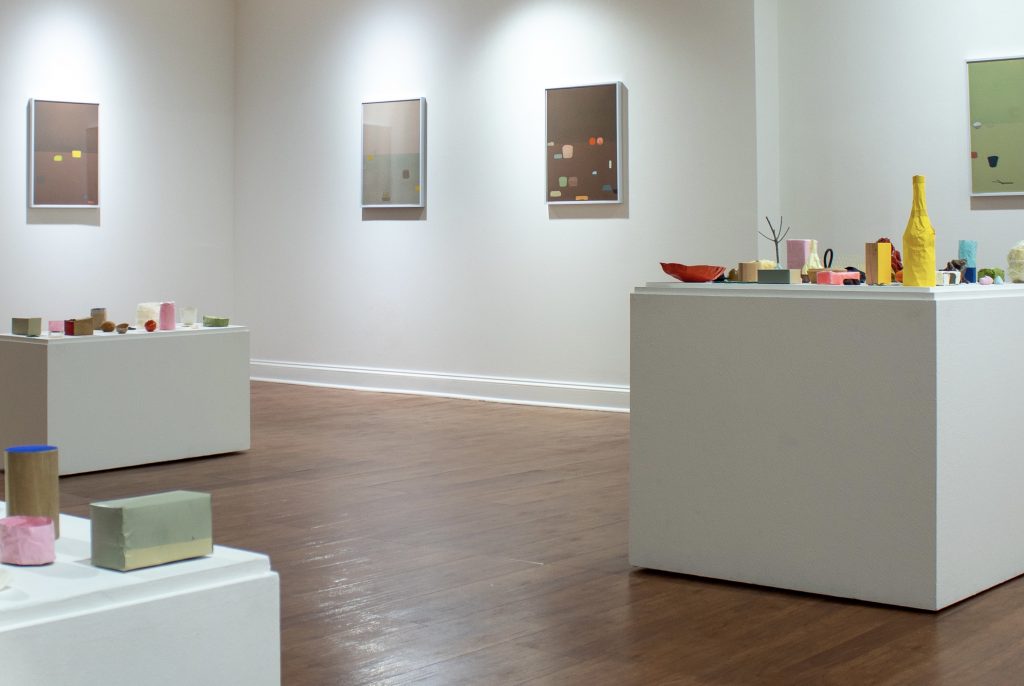
Image courtesy of Gallery114@HCC Ybor City Campus.
There are three pedestals composed in the middle of the floor, each covered with little objects, some with oddly familiar shapes, like Claes Oldenburg’s monumental sculptures that more or less resemble everyday things, except these are in sizes that can easily fit inside a coat pocket; there’s a video showing the same stuff in a smaller, but ever-changing grouping, the setting like a photographer’s studio; there are framed mixed media works hung on the wall, each depicting a landscape with a scattering of these objects; and finally there’re two small shelves, each with a rectangular box made delicately from Japanese paper, sitting on a greenish felt, like architectural models of some basic structural forms.
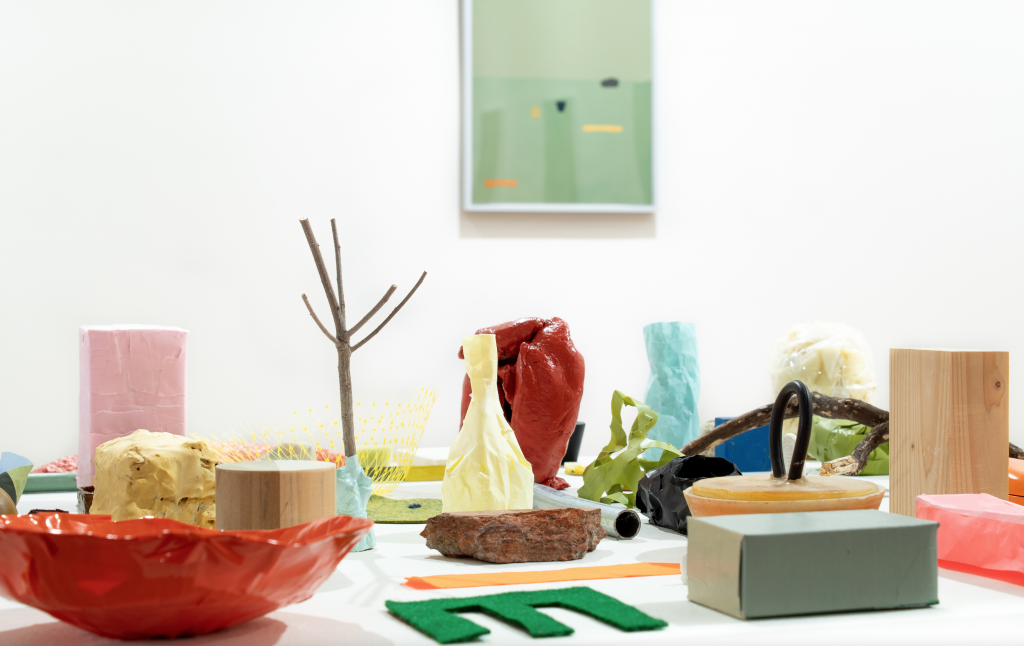
Image courtesy of Gallery114@HCC Ybor City Campus.
The pedestals could be an archipelago, a small group of islands with colored and differently shaped things that washed in from the sea, and the wind blew them around and around to end up where they are now, curios.
And taking a walk on these island shores, kicking around at your feet, these shaped and color things, maybe they are sea shells, or sand smoothed pebbles, perhaps pieces of coral, but most definitely flotsam and jetsam telling tales of their long transformative voyage through the ocean waves, when a glint of something catches your eye and you pick it up, examine it, drop it in your pocket, take it home, place it on a shelf, or window sill, or the end table, alongside all the other odds and ends that have been collected from here and there over the years, and now together they all are, in the same time and space, more or less coexisting, little islands in of themselves.
A friend comes and visits and they might admire your collection, picks one up, studies it, puts it back, but not quite the same spot or orientation; or maybe it’s cleaning day, and the objects are lifted one by one, dusted and put back, and again, not all returned to the exact same position. The arrangement thus shifts slightly, hardly noticeable, and continues shifting one cleaning day after another, one friend’s exploratory hands after another.
This constant picking up and putting back is essentially the 20 minutes long video piece. With the magic of video editing, pieces suddenly pop in and out of existence, creating a slightly different composition with each editing cut. One piece may go poof and reappear in a little while next to something else, or maybe never appear again. The viewer’s brow tense with concentrated anticipation. Did someone just get kidnapped, or is this an example of what physicists call entanglement? Who knew such unassuming objects appearing and disappearing could create such a drama. A suspenseful video performance where the artist is unseen.
The framed works on the wall is non-action action in a flat space. There’s a line, could be a table’s edge or the horizon, plane of the sky meets plane of the earth, but unlike the objects on the pedestals or in the video where they’re visibly grounded, the objects in these mixed media pieces feel suspended, while not as high as the floating bowler hat men in a René Magritte painting, they are not as affected by the gravity that anchors their pedestal counterparts.

Image courtesy of Gallery114@HCC Ybor City Campus.
Within each frame is a vignette of possibilities. They are very precise and elegant, exuding a calm to the videos’ caprice. Its stillness belies conscious intentions and subtleties of movement, like a person in meditation, where meditation is a deliberate act, as in the long wave of the tsunami, its motion unseen, or unrecognized until it momentously meets the shore.
The exhibition is titled Themes for the American Kestrel. There’s a curious group of objects way up on one of the gallery’s architectural ledges, next to the title wall, with one of the objects resembling a bird, watching all that’s below. This little vignette does not have a title or exhibition label, nor is it acknowledged anywhere else, and being high above eye level, could be easily missed.
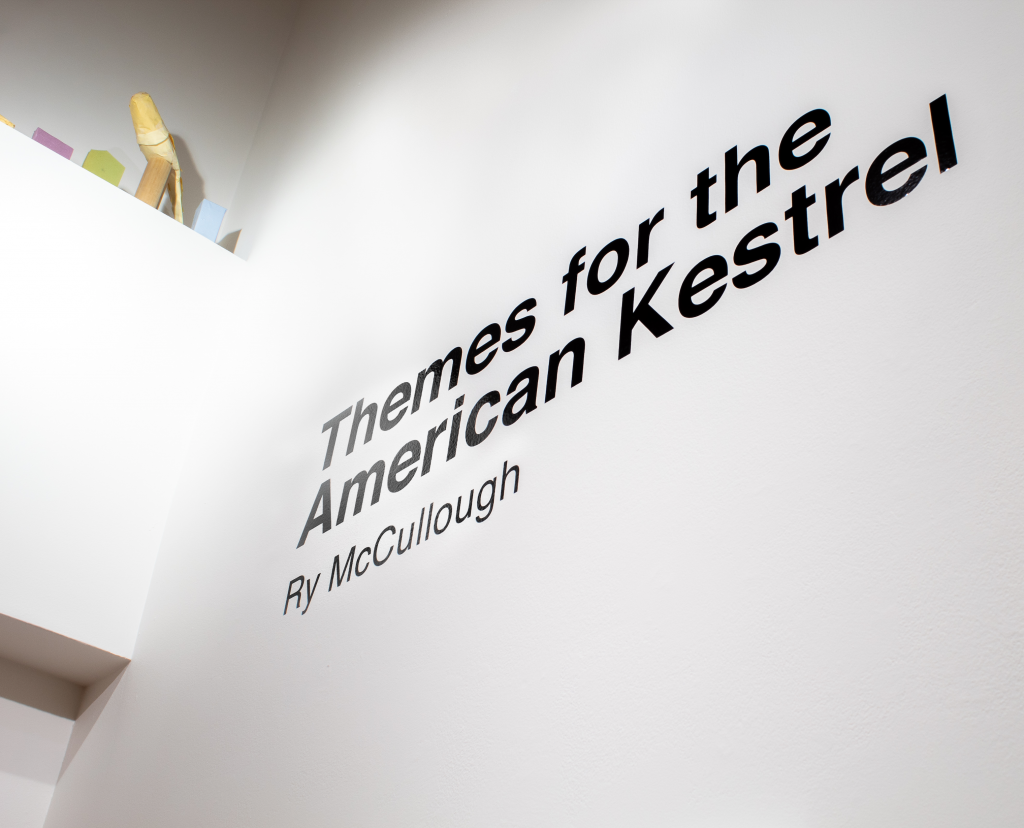
Image courtesy of Gallery114@HCC Ybor City Campus.
Perhaps the zen like statement from the artist in the exhibition brochure may explain this apparition high on the ledge: “I sit and the bird arrives or the bird sits and I arrive, or not.”, or maybe it’s the meaning of the exhibition title, or both, or neither.
The exhibition brochure, designed like one of the framed wall works, is very handsome, includes a meaningful quote from Virginia Woolf, with the opening phrases: “How much better is silence; the coffee cup, the table. How much better to sit by myself like the solitary sea-bird that opens its wings on the stake….”
Following this is a brief artist statement outlining his ideas and intentions. Towards the end of the statement, McCullough references the artist Giorgio Morandi and his still-life paintings as a counterpoint to the evolving compositions in his video piece.
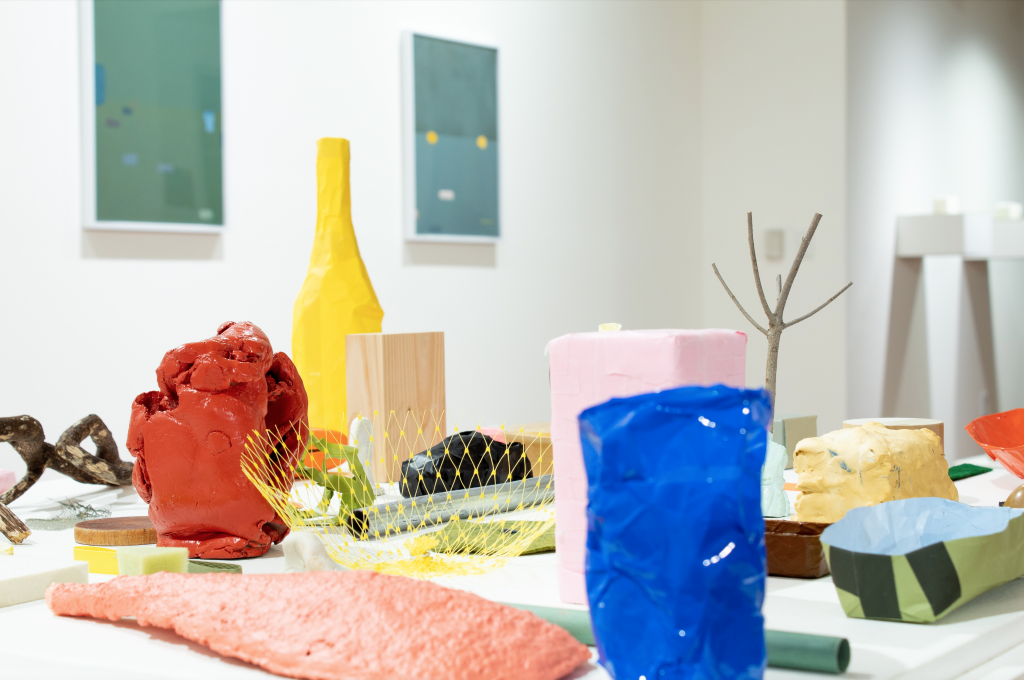
Morandi (1890-1964) lived his whole life in Bologna, Italy, where for the last 40 or so years of his artistic practice he maintained a singular focus on regimented compositions of bottles, vases, and similarly shaped and size objects, painted with subtle hues and tone gradations. It is an ascetic discipline, like a monk repeating a mantra, like Sol LeWitt’s endless iterations of the skeletal cube. The subtlest of details and changes are noticed with potential significance, like when physicists discovering an elemental particle, or that tiny chili pepper altering the flavor makeup of an entire dish.
If Morandi’s 40 years could be compressed into a 20 minutes time-lapse video, the result might be something like McCullough’s own video performance. Of course, a time-lapse video skips over many moments and details. But what is 40 years or 20 minutes, barely a nanosecond within a razor-thin sliver of a rock layer tucked in a stratum of the earth’s crust in the expanse of geologic time.
The exhibition is open to the public by appointment through June 24, 2021. For additional information about the gallery visit the Galleries at HCC website.
Ry McCullough received his MFA in Printmaking and Book Arts from the Lamar Dodd School of Art at the University of Georgia. He is an Associate Professor of Art and Design at the University of Tampa in Tampa, FL.
Tony Wong Palms is the Exhibitions Coordinator/Designer at the University of South Florida Contemporary Art Museum in Tampa, FL.
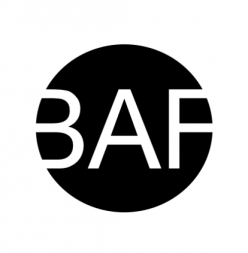

Nice work Tony. I enjoyed reading your take on Ry’s meditative – yet energetic – exhibit. My favorite element was the video – although I loved all of it – especially the bird high in the corner. Thank you for writing about it and being so thoughtful in your explanations.